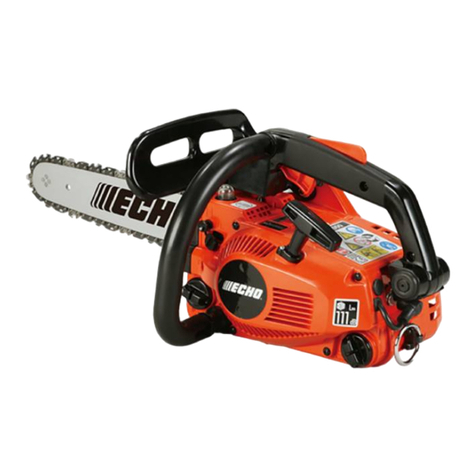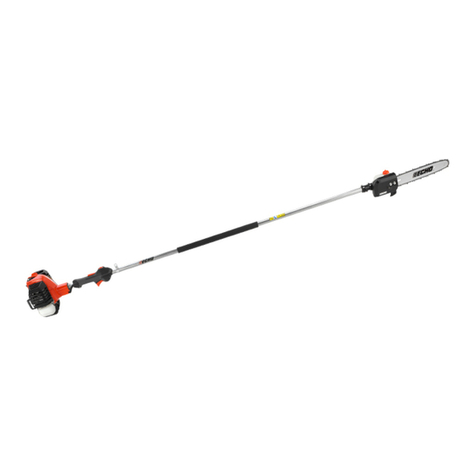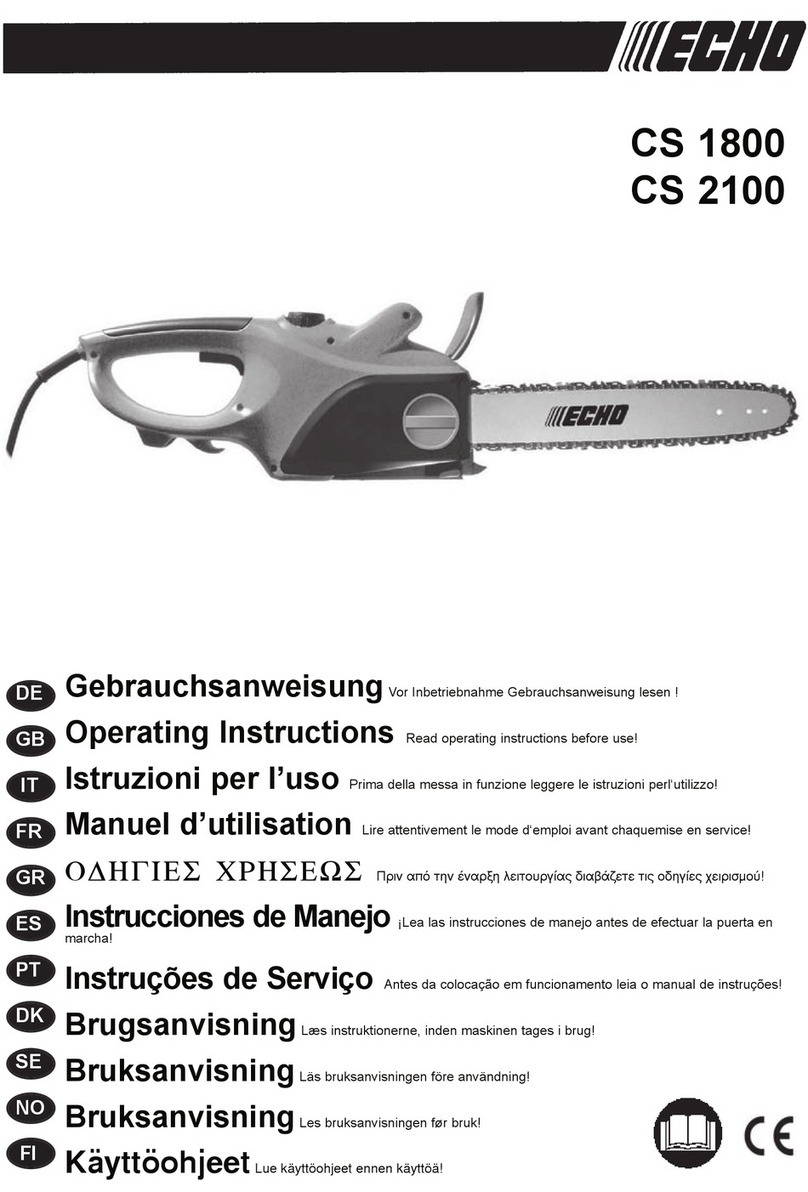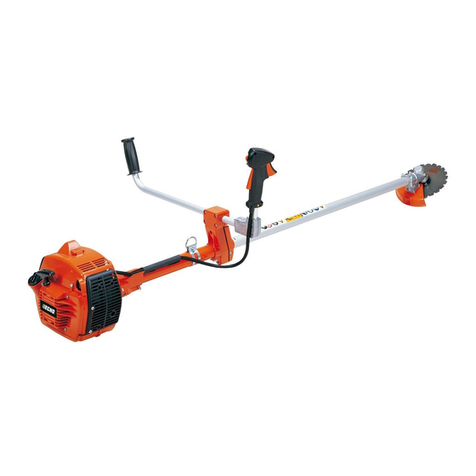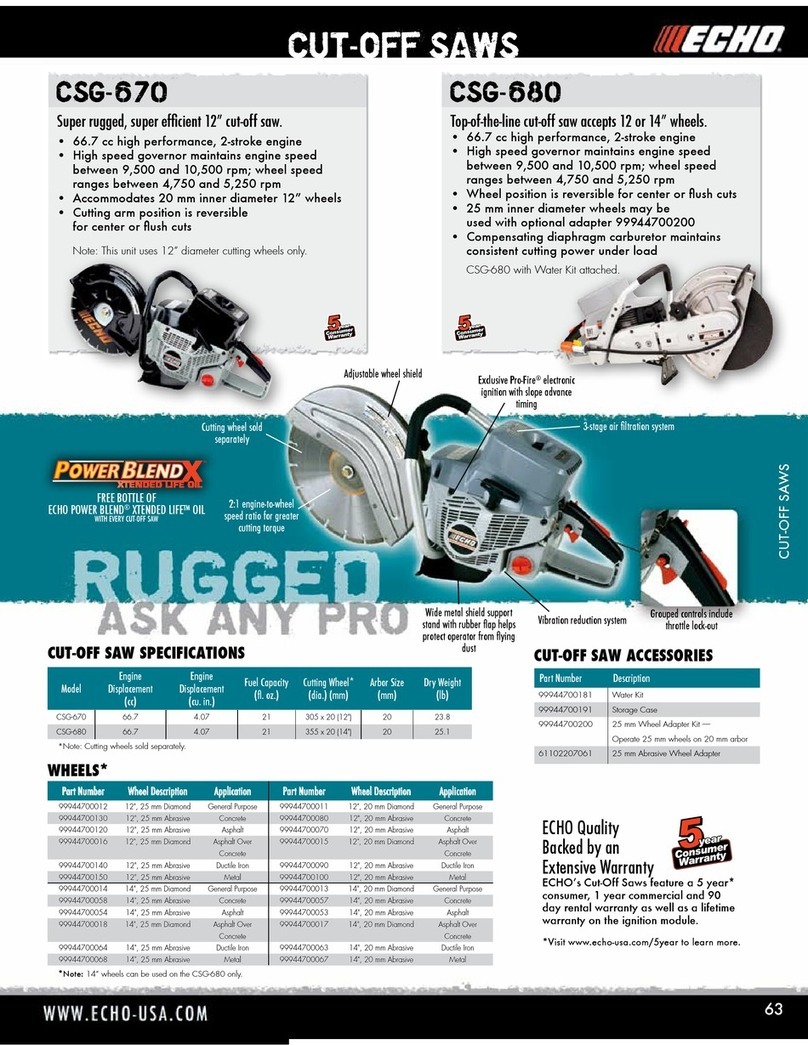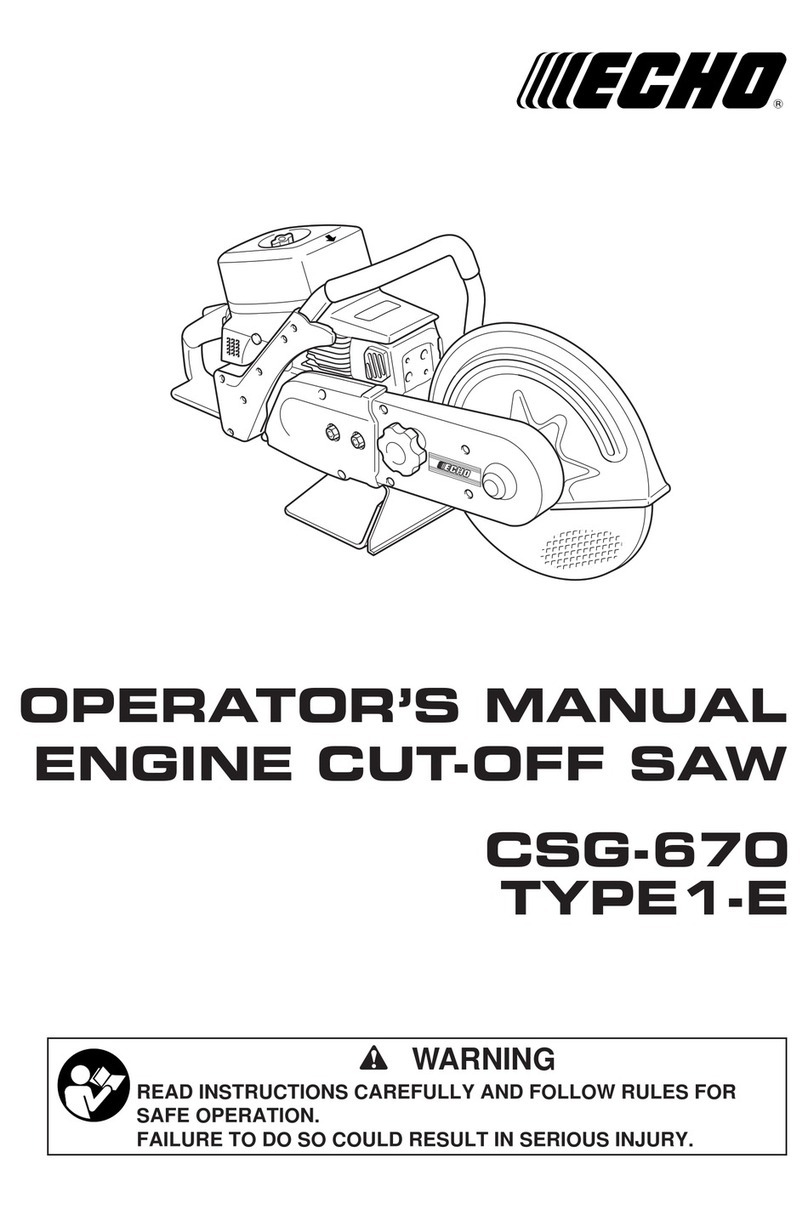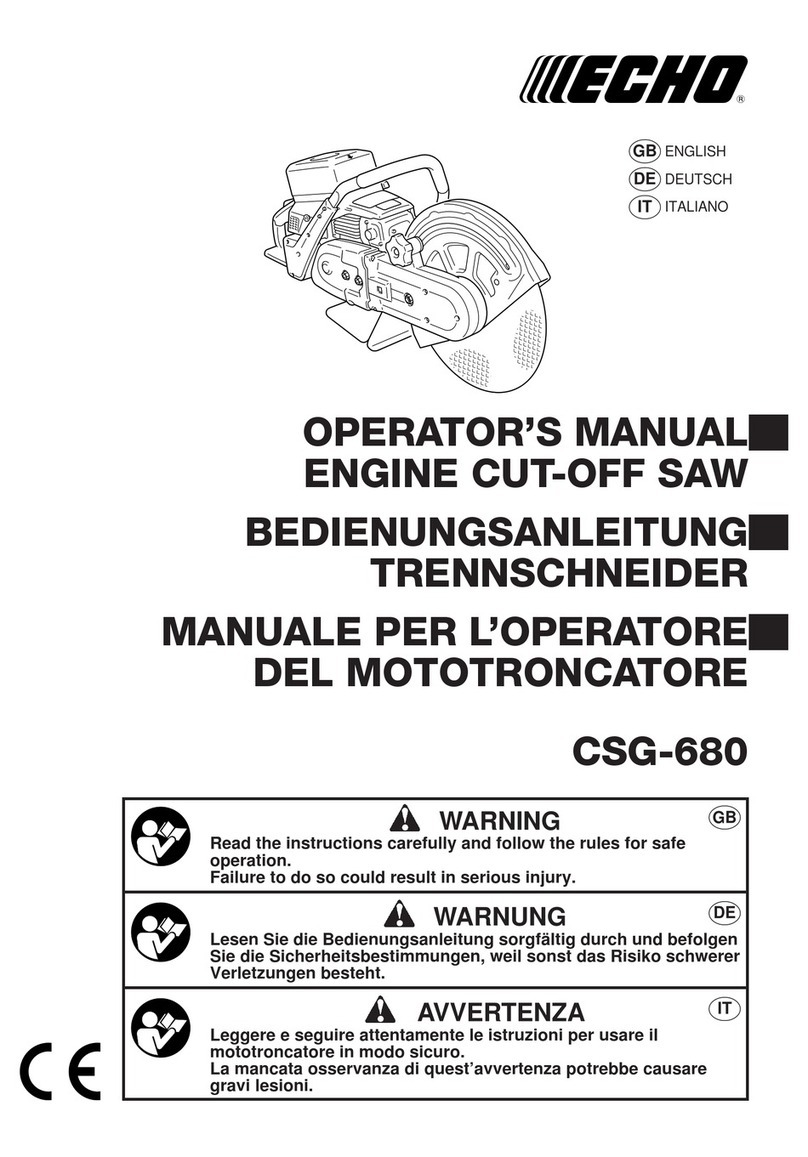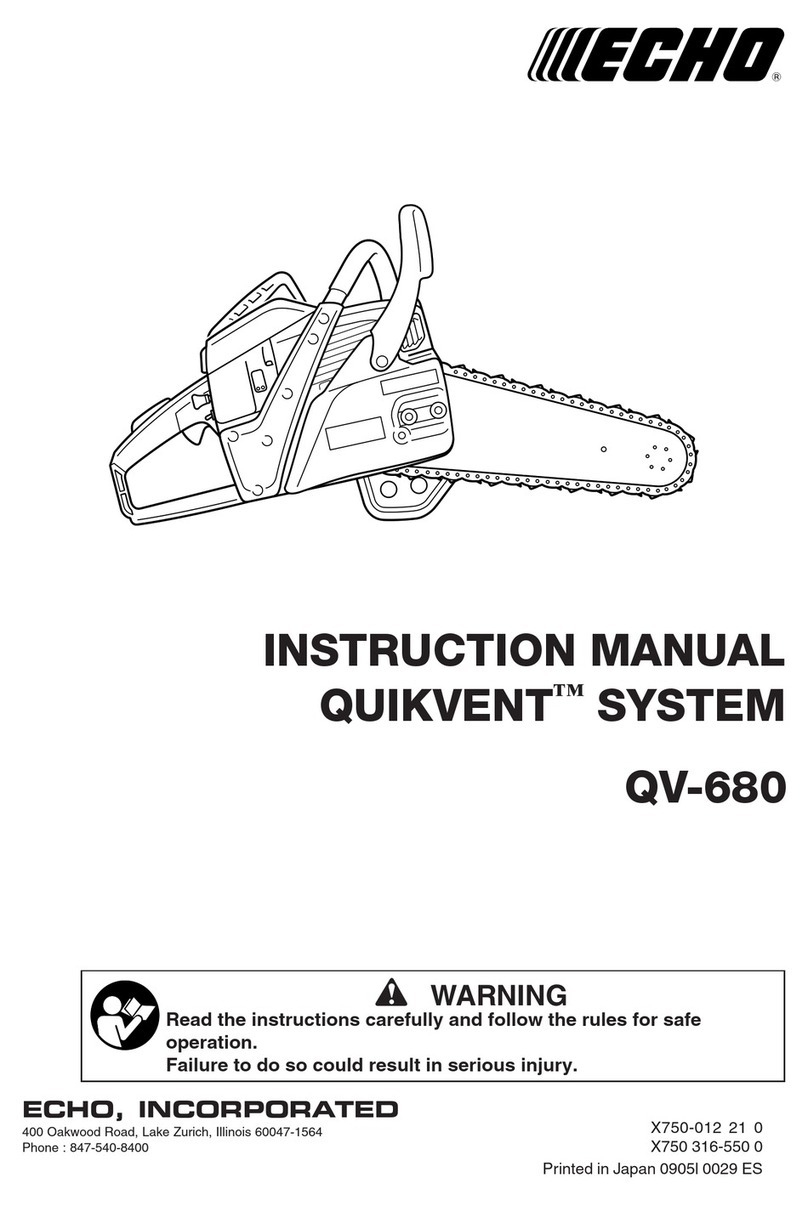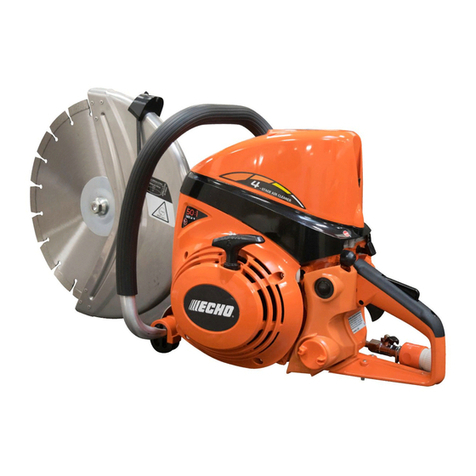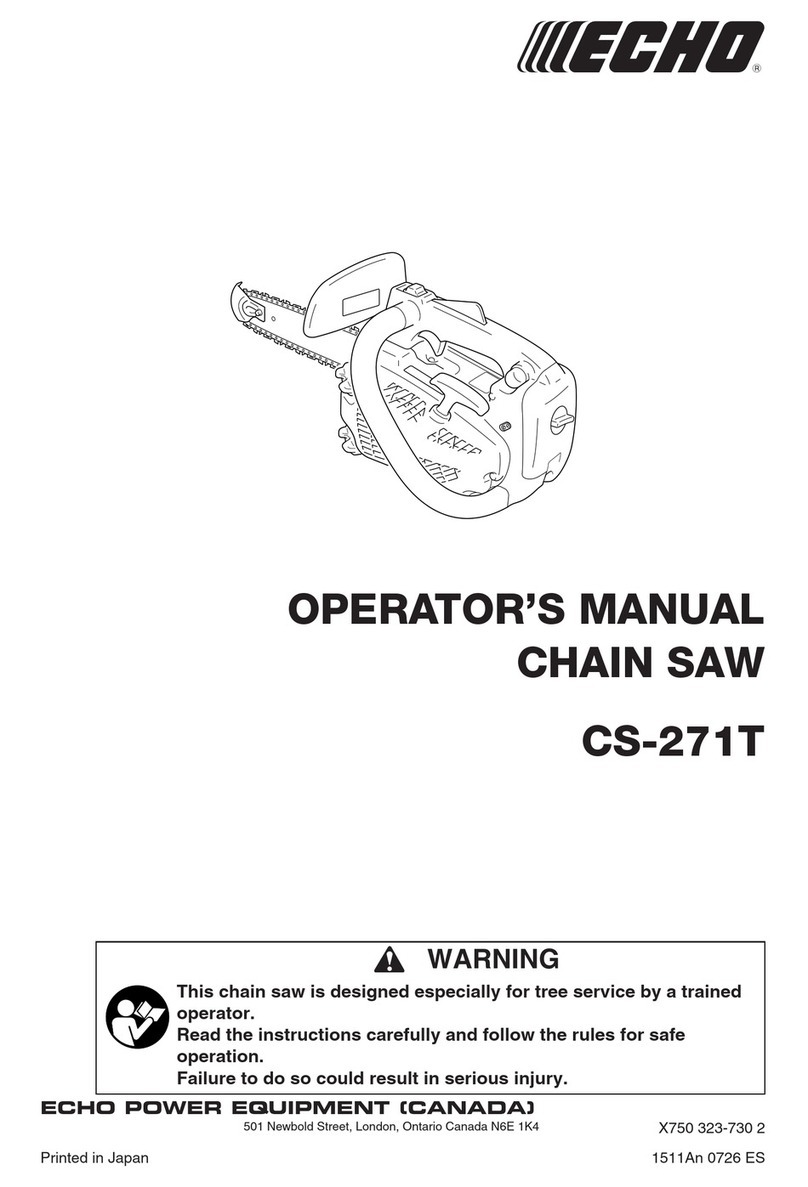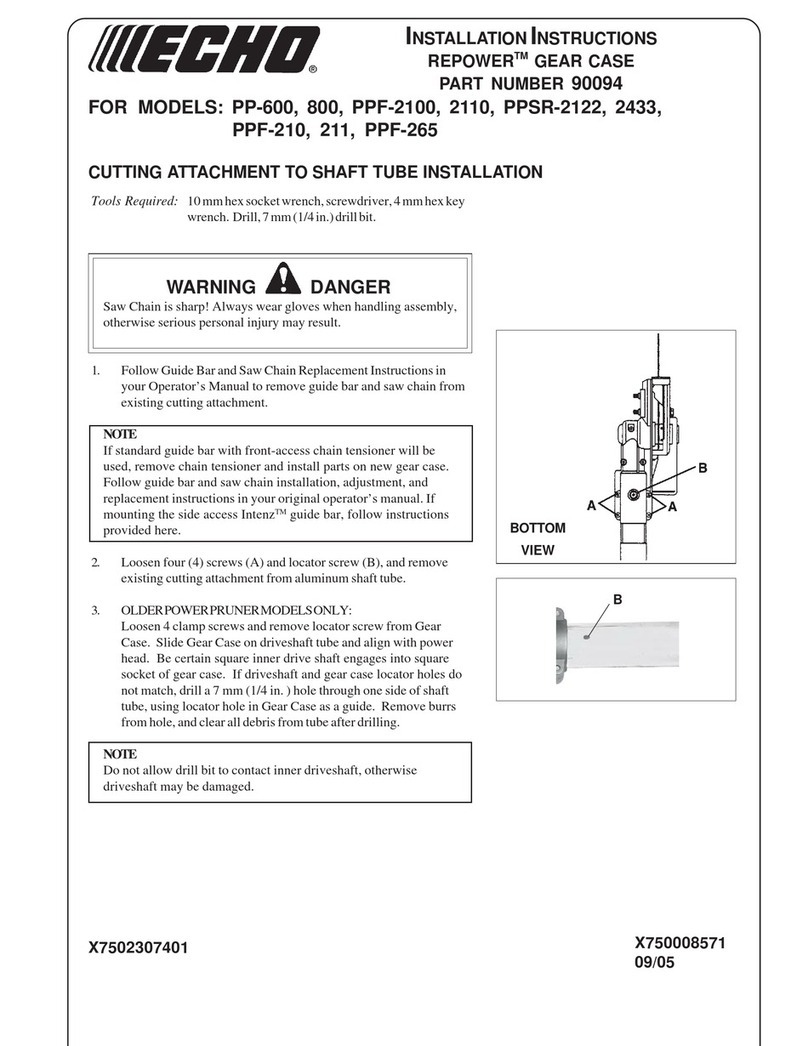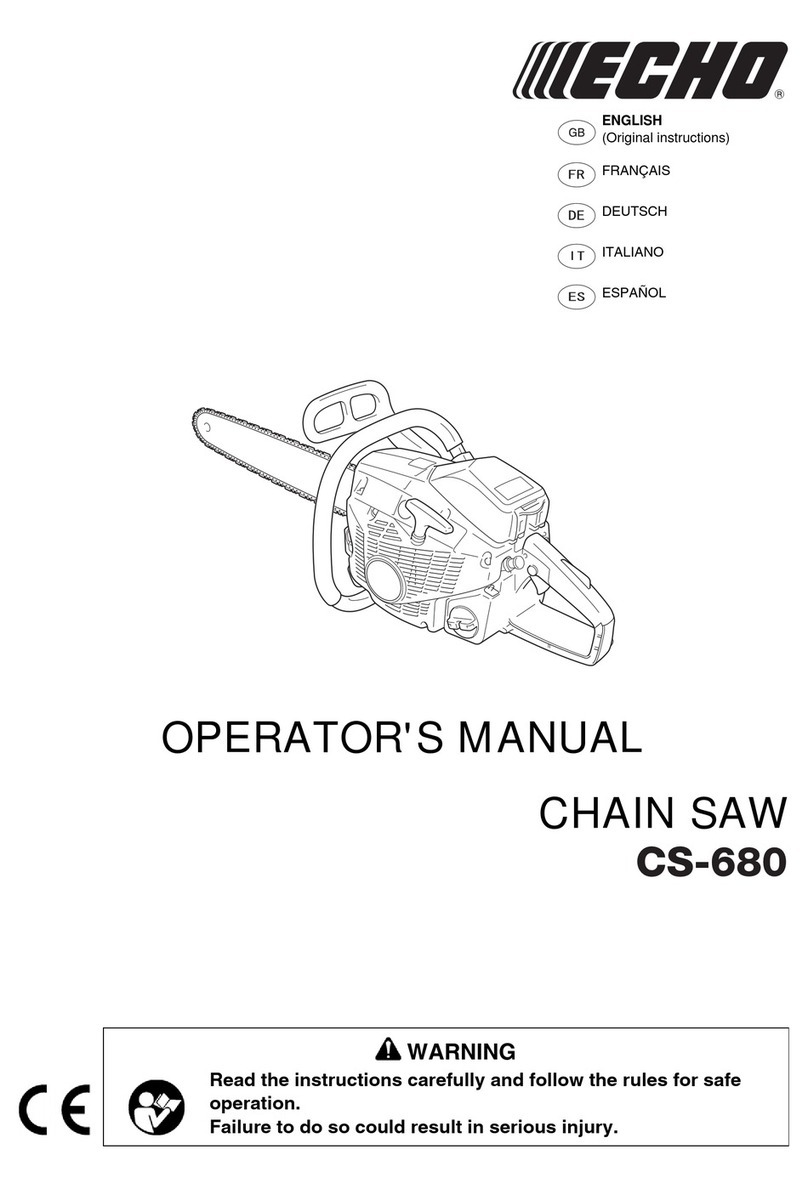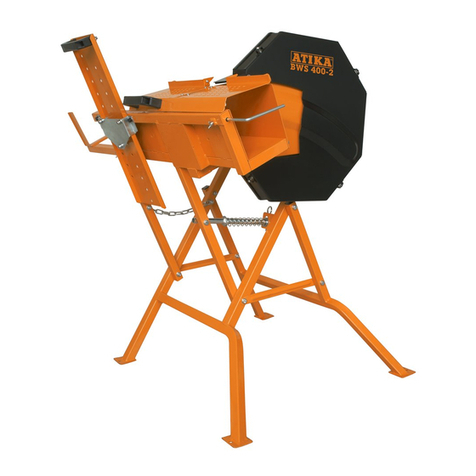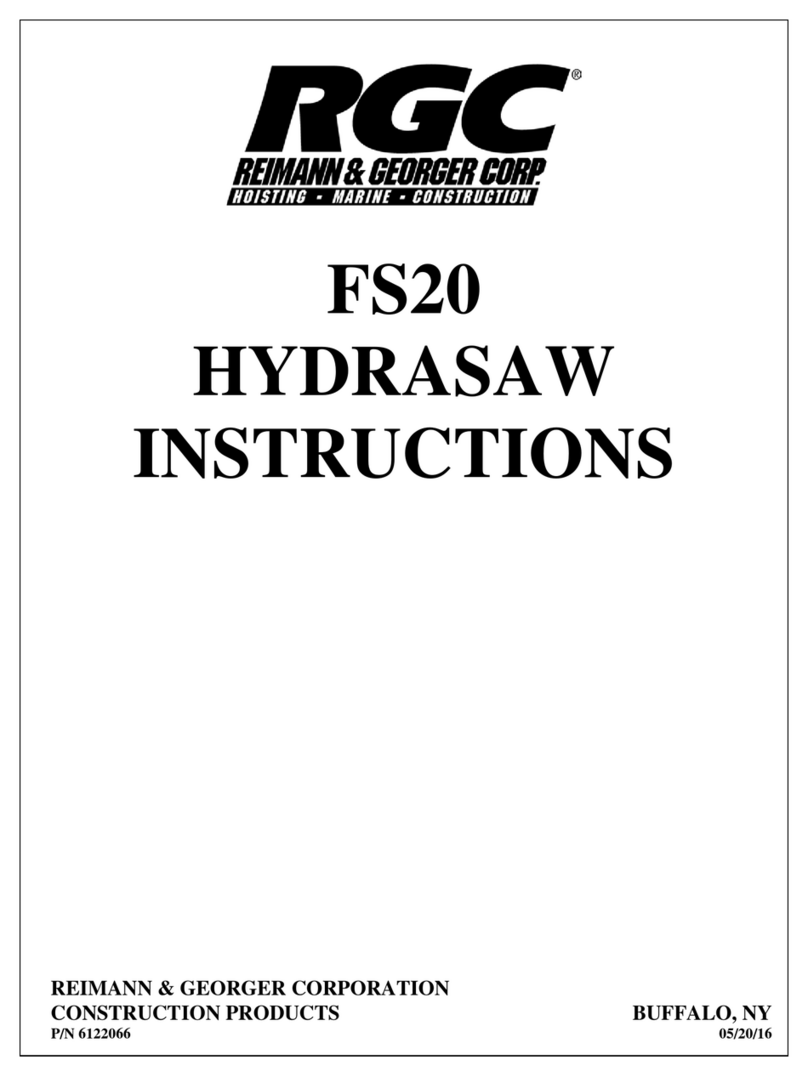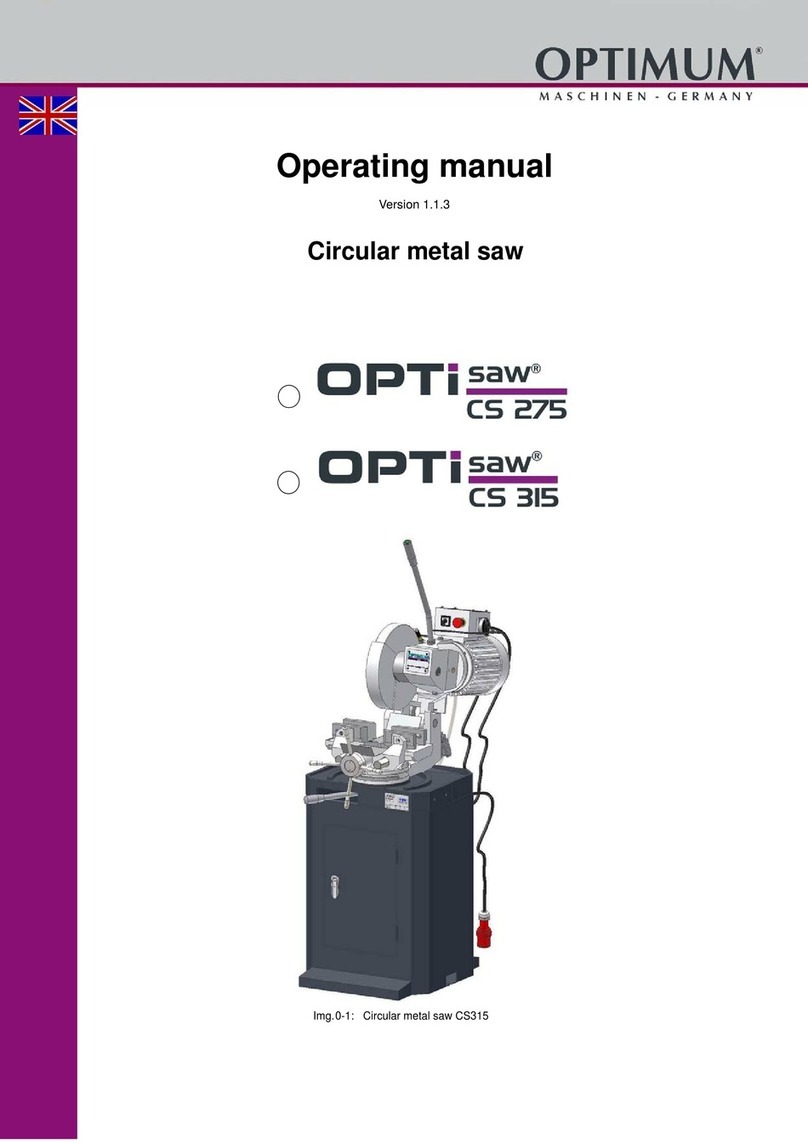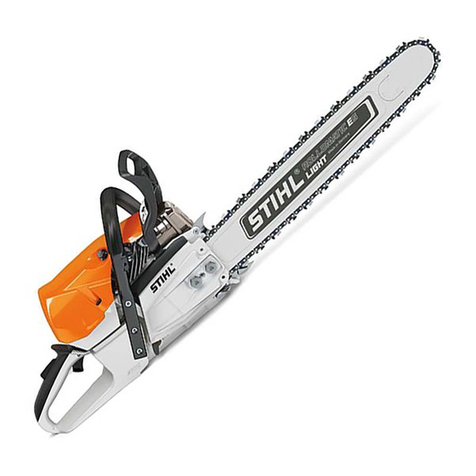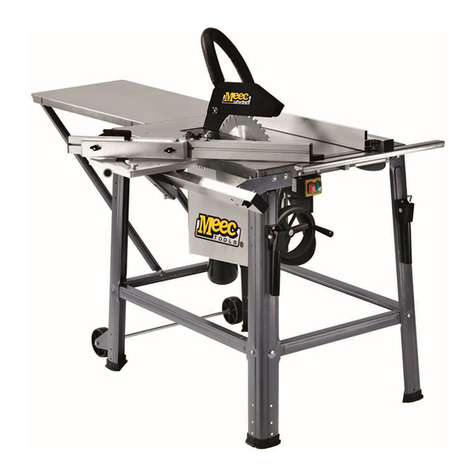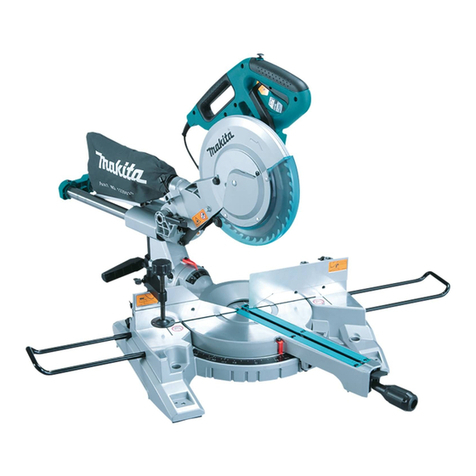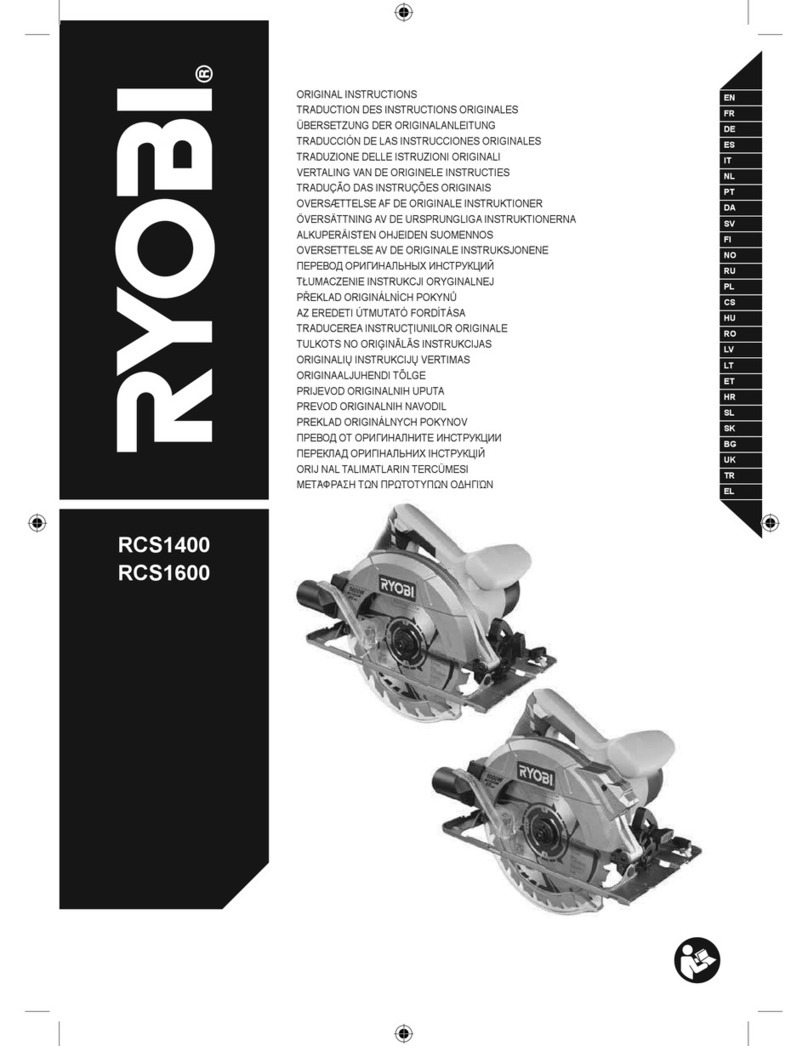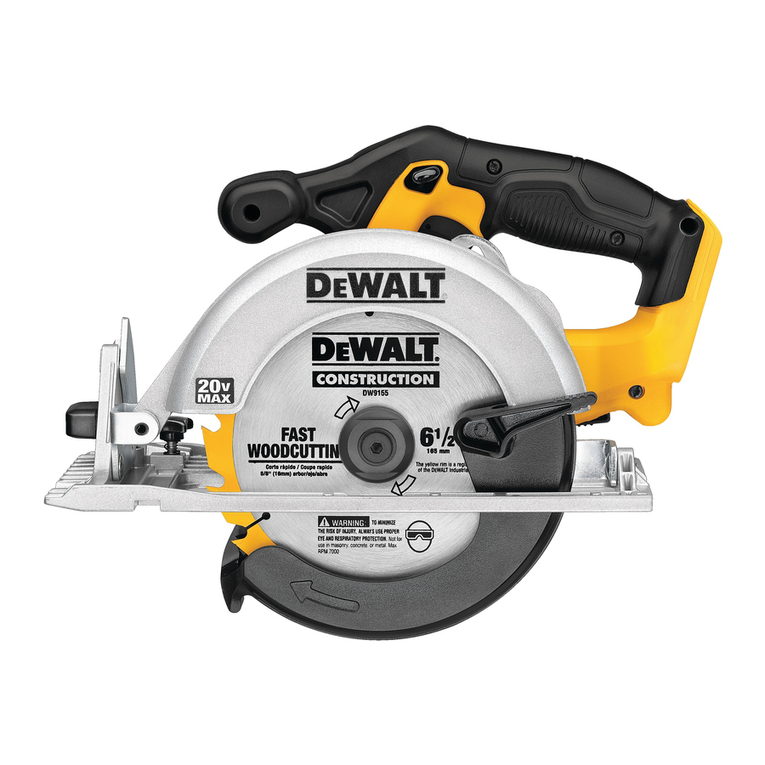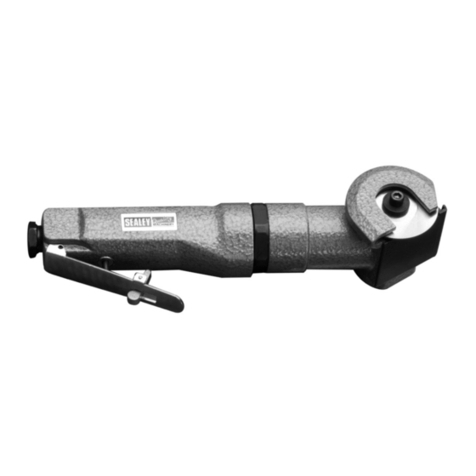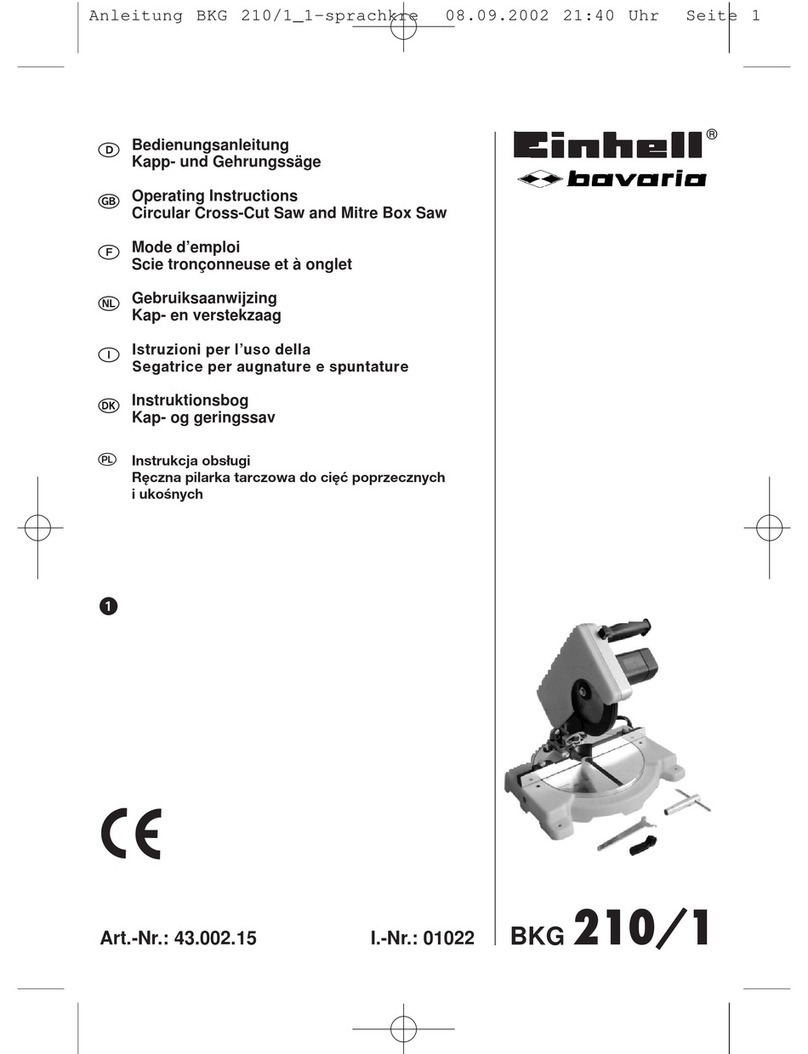
5CSG-670 TYPE1-E
DEFINITION OF TERMS
ANSI – American National Standards Institute.
Arbor – A spindle or axle.
Arbor Hole – The mounting hole in the abrasive
wheel.
Automatic Belt Tensioner – This feature, a spring-
loaded device in the wheel arm, maintains belt
tension.
Blotters – Discs of soft material placed between
wheel and mounting flanges to equalize
pressure against the wheel, and to avoid wear
on the flanges if slipping occurs.
Chaps – Protective covers for the legs.
Choke Control – The device used to enrich the
fuel/air mixture when starting the engine.
Cold Start – Starting sequence required whenever
engine is not warm enough from previous
operation to be started without choking.
Drop-Start – An improper variation of starting while
holding saw in the air. Do not start saw in the air.
Dust Mask – A device worn to prevent breathing in
dust.
Engine Speed – The speed of the engine output
shaft.
Face Shield – A device worn in front of the eyes,
and all or part of the face, to supplement the
protection afforded by a primary protective
device.
Gasohol – Gasoline containing methyl alcohol
(methanol) or more than 10 % of ethyl alcohol
(ethanol) that is harmful to internal engine parts.
Goggles – A device, with impact-resistant lenses,
intended to protect the eyes from the front, top
and sides. The goggles are stamped Z 87 for
qualification.
Governor – A device which limits the speed of the
engine.
Idle Speed – An engine speed which is slow
enough that the clutch does not engage.
Ignition Seitch – The device which allows the
operator to run or stop the engine.
Kickback – A dangerous reaction and movement
off the saw, in an upward arc towards the
operator, caused by contact with an object at
the front segment of the wheel.
No Load Speed – The speed of the engine when
no load is applied.
Reduction Ratio – The ratio between the engine
speed and the spindle speed.
Reinforced Wheel – Abrasive wheels bonded on
both sides with layers of a fiber mesh material.
Spindle – An axle or arbor.
Spindle Speed – The speed at which the spindle
or wheel axle rotates.
Throttle Latch – A device used to latch the throttle
trigger in a position for starting the engine.
Throttle Trigger Lockout Lever – A lever on the
rear handle grip which the operator must hold
depressed for control of the throttle trigger, and
when released will lock the throttle control in the
idle position.
Throttle Trigger – The device in the rear handle
used to control the speed of the engine.
Two-Stroke Fuel – Fuel containing the lubricant for
two-stroke engines. It is made by mixing 2-
stroke engine oil with gasoline.
Water-Flush – Constantly spraying the stone or
masonry surface during cutting, in order to
reduce exposure to dust, and also cool the
wheel.
Wheel Guard – A wheel shield which is intended to
protect the operator from wheel contact, and
also direct debris away from the operator.
Wheel Speed – The speed (r/min) of the shaft
(spindle, arbor) on which the cutting wheel is
mounted.
Wheel Speed Rating – The speed printed on the
label of the wheel by the manufacturer is the
maximum allowable wheel speed.
Wheel Thrust – The force of the wheel against the
work, felt by the operator as a pull of the saw.
